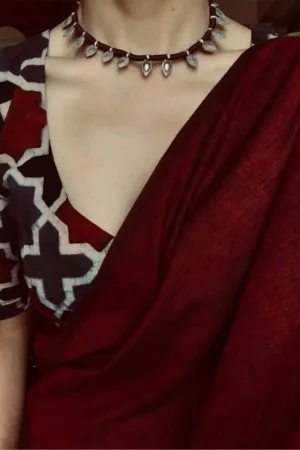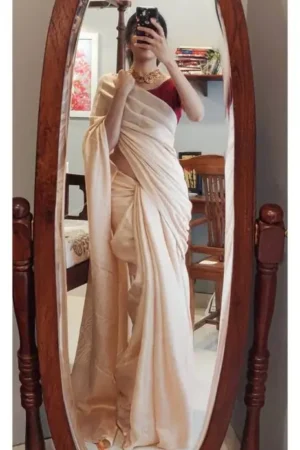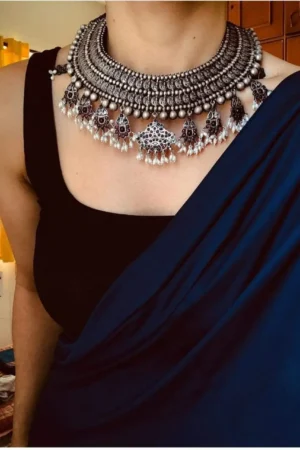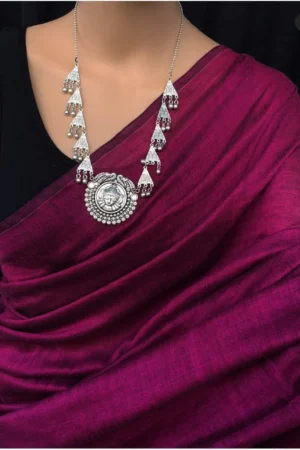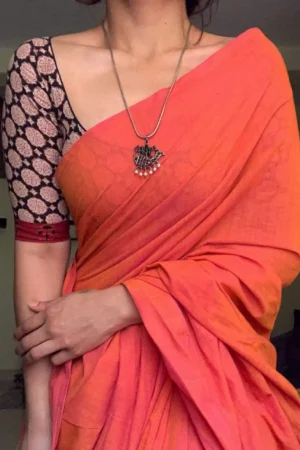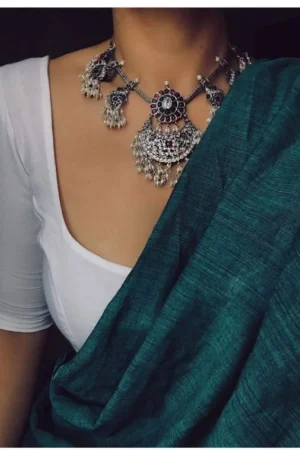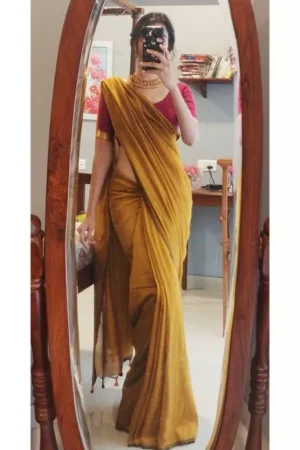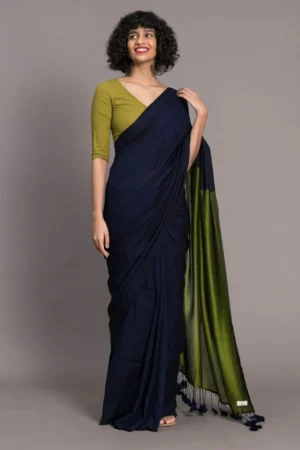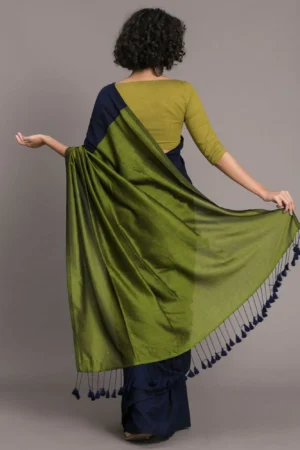ALL ABOUT THE ENCHANTING IKATWhen you think of ikat – intricate diamond shaped patterns, curved scroll and paisley designs come to mind. Do you know, what seems like printed designs on fabric is actually a complex weaving style that uses specially dyed threads to develop a pattern on the fabric as the weaver weaves along? Even though it is a tie-dye textile art, but ikat has its own flavour. If you really go back in history, ikat is not India’s indigenous textile art. It is also called as ikkat or ikhat. Actually, textile historians are still trying to figure out ikat’s place of origin, since this textile art can be seen far and wide. One interesting fact, though – the word ikat has come from the Malay-Indonesian word Mengikat, which means to tie a bundle of yarn or threads.
If you really go back in history, ikat is not India’s indigenous textile art. It is also called as ikkat or ikhat. Actually, textile historians are still trying to figure out ikat’s place of origin, since this textile art can be seen far and wide. One interesting fact, though – the word ikat has come from the Malay-Indonesian word Mengikat, which means to tie a bundle of yarn or threads.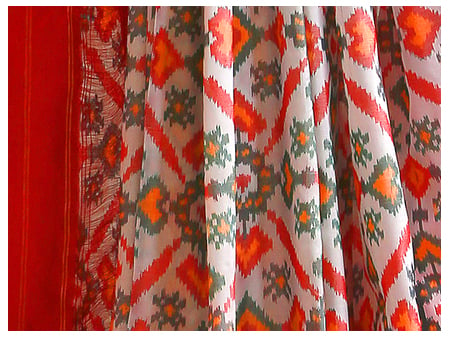 In India, sources of Ikat patterns, dating back to 7th Century are available. It is made into stunning materials, sarees, ethnic and fusion-wear. Ikat kurtas are much loved in India, and so are Ikat saris, with more than 9-10 varieties/variations of Ikat techniques and scores of patterns available in this marvellous art.TRAVELLING TALES OF IKATn fact, many textile experts believe that the art evolved in various places in Indonesia and other South East Asian countries like Cambodia, Myanmar, Philippines, and Thailand. They have a long history of developing the ikat weaving style; each with a flavour of its own and colonisation of Indonesia and countries in Central America by the Dutch invaders meant ikat as textile art travelled to countries like Argentina, Bolivia, Mexico and Guatemala.
In India, sources of Ikat patterns, dating back to 7th Century are available. It is made into stunning materials, sarees, ethnic and fusion-wear. Ikat kurtas are much loved in India, and so are Ikat saris, with more than 9-10 varieties/variations of Ikat techniques and scores of patterns available in this marvellous art.TRAVELLING TALES OF IKATn fact, many textile experts believe that the art evolved in various places in Indonesia and other South East Asian countries like Cambodia, Myanmar, Philippines, and Thailand. They have a long history of developing the ikat weaving style; each with a flavour of its own and colonisation of Indonesia and countries in Central America by the Dutch invaders meant ikat as textile art travelled to countries like Argentina, Bolivia, Mexico and Guatemala.

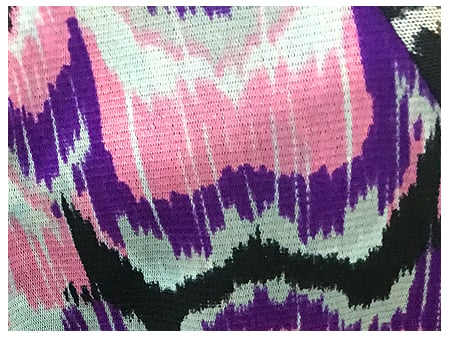
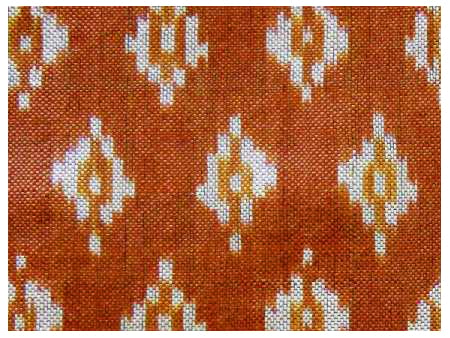
But ikat came to India long, long ago; because of its trade ties in the ancient times with China and Indonesia.Old frescos at Ajanta and Ellora caves show figures wearing garments with ikkat patterns on them, which proves that as early as 7th century CE, the weavers in India were using the ikat style of dyeing the yarn and weaving the fabric. Here, the art took on a very elaborate and sophisticated tone.In India, it came to be developed as a prominent handloom textile art in three major regions – Andhra Pradesh/Telangana, Gujarat, and Odisha. Over the years, these three regions developed their own style of ikkat weaving – each distinct in pattern and the way the yarn is dyed and used. In fact, the fine quality of ikat from India became so popular that at one point in history, ikhat was taken as currency on the famous Silk Route which further helped develop the ikat form in the Afghan region and Uzbekistan.


IKAT WEAVES OF INDIAYou might ask why Indian ikat is so much in demand globally. It’s because of the experience and the developing techniques of the master weavers here. The special thing about ikat weaving in India is that each region has evolved its own style of dyeing and weaving of the yarns.IKAT FROM ANDHRA/ TELANGANATelia Rumaal and Pochampally Ikat– One of the most unique of all Indian ikat weaving forms is the Telia Rumal from Andhra Pradesh, where the yarn is not only tied-dyed, but is also treated with a special oil to give the fabric a characteristic sheen. This is a double ikat usually, so both warp and weft (longitudinal and crossing-over) yarns are dyed with motifs drawn on them. The yarns are then dipped in castor ash and oil, and are then woven. The motifs are mostly geometrical and repetitive – large, well-defined diamonds, hexagons, squares are the usual design bases, you will find in the Telia Rumal ikat. Known to be cooling and auspicious, Telia used to be integrally linked to the culture of the place, it was woven in. Unfortunately, this became a dwindling craft, but thankfully is on the path to revival.


POCHAMPALLYThe designs in Telia Rumaal are often larger and sharper compared to the ikat designs in the intricate, relatively more popular Pochampally (double) Ikats from the same area. These relatively blurrier, highly prized, ikats are quite popular and much loved. Silk sarees, cotton sarees and silk-cotton Pochampally ikat fabrics are much sought after. They take a lot of time in making, as both warp and weft yarns are tied and dyed.PUTTAPAKA SAREES FROM TELANGANAThe tie and dye technique used to create a special ikkat, in the Nalgonda district of erstwhile Andhra – now Telangana – primarily in the village named Puttapaka – is the basis of these rare saris. This is a single ikat – but unlike the other popular forms, this is done on the warp yarn (the longitudinal lengths of the yarn) of the fabric. Mostly these saris are also sold under the name of more popular Pochampallis, though the two are somewhat different. The designs may be simple, but the symmetry is remarkable in this ikat.
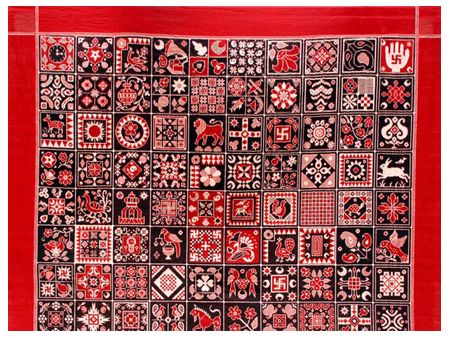

IKAT FROM ODISHA (SAMBALPURI IKAT)Other types of warp ikat patterns are primarily made in Odisha in India. Sambalpur, Bargarh, Sonepur and Boudh are the areas in Odisha, where this form of ikat is woven. In Odisha, it is also called bandha. The yarns used are fine, and the designs often have animal motifs and curvilinear patterns. In this form, the tie-dyed yarns are first arranged in the loom in a design, and then the solid coloured weft yarns are put in. This form of ikat is very old and is used in Indonesia as well to create their ikat fabrics.
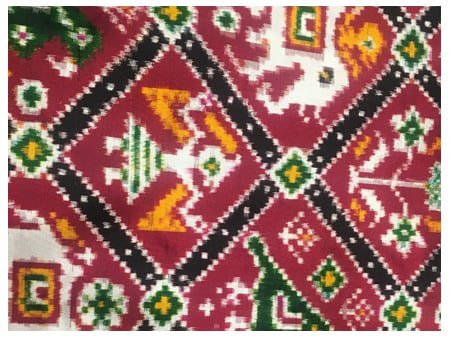
PASAPALLI IKAT

Sambalpuri Ikkat is the most famous of these, and so are Sambalpuri Sarees. Pasapalli are other gorgeous ikat sarees, made in Odhisa. They are basically much on the same lines of the Sambalpuris, but the patterns resemble a 4 players’ board game – Pasa – and hence the name.RAJKOT PATOLA

Rajkot Patola is another type of ikat, which is not as prized and sharp as the Patan Patola, but has its own subtle beauty and charm.DOUBLE IKAT OF PATOLA AND POCHAMPALLYThe most intricate and labour-intensive of all the ikat designs are the ones that are made using the double ikat weaving technique. Weavers in Patan in Gujarat and (some in) Pochampally in Telangana use this technique to create their ikat designs. The patterns are finer and often have a floral, circular and paisley motif. The designs appear smoother and sharper. Smaller booti patterns and bold geometrical lines also define this weaving form. Patan in Gujarat is popular for the silk ikat weaving that is popularly known as Patola. The designs have minute details, developing along a single length. Authentic Patolas are extremely rare and take great skill and meticulous detail in weaving. Simple patterns take anywhere between 10 to 20 days for weaving (of one saree/ 6 yards of fabric), while the complex ones can go on for months. Patola silk ikat patterns are considered an achievement in textile arts because of the complex dyeing and pattern creation process with the delicate silk yarns.
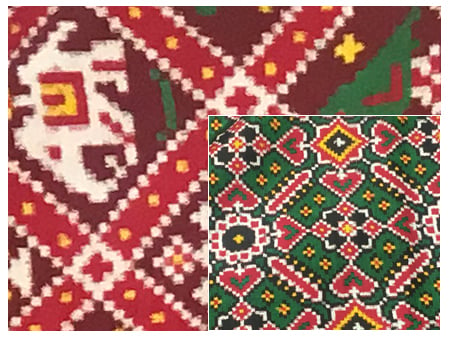

IKAT IN CONTEMPORARY TIMESApart from apparels, Ikat is also used to create stunning home décor, which includes bed sheets, cushion covers, carpets and more. It is quite popular on accessories like bags and jewellery too. Ikat style necklaces are quite a fad these days.As for the outfits and fashion, when you think of buying ikat today, it is most likely that you relate it to buying a saree rather than buying the fabric. In fact, if you are looking to adopt an indie style with an ethnic and traditional flavour then owning a cotton ikat saree is a must. A cotton ikat saree looks beautiful and smart as a formal work wear and happens to be easier to maintain as well.Invest in a Patola ikat for formal, and celebratory events as they tend to add a touch of sophistication to your whole look. Silk Patola ikat sarees make beautiful heirlooms that you can pass on to your next generation.But if you are not into sarees, but still want to wear this beautiful textile art, then pick cotton ikat fabric. Get well-fitted tunics and kurtas tailored in ikat fabric to wear to work and even to traditional dos, as fusion wear looks amazing with ikat fabric.Even though the ikat art is age old, in the modern context, it continues to hold its own. If you are into ethnic chic wear, then investing in this unique textile art makes much sense.
POINTERS ON THE IKAT WEAVING TECHNIQUE

1. Ikat patterns are developed through resist dyeing method, and the unique fact about ikat is that the basis of the design is formed in the yarn rather than in the fabric as it is done in the other two popular Indian resist dyeing methods of bandhini and batik.2. The yarn – it could be in a bundle or be individual – is first tightly wrapped to form a pattern. Then the yarns are dyed in the desired colour. The dyeing process is carried out multiple times in different colours by the weavers to get the design they have drawn for the fabric to be woven.3. Once the yarn is ready, the weaver weaves the fabric, and the designs that get formed have a blurred quality. The repetitive blurred pattern on the fabric is seen as the finesse of ikat rather than the sharpness of the design, like one might see in block printed or embroidered fabrics.4. This blurriness in the design depends on the thickness of the yarns and the skill of the weaver when he or she is laying out the pattern.5. The more intricate the designs, the more valuable the fabric. Moreover some textile experts and designers also tend value the blurriness of the designs, especially, when the ikat is done in pure cotton. This ensures that these sarees are the ‘real’ thing – instead of some printed ikat design. Silk ikats tend to have little sharper designs in comparison. Telia Rumal has sharper ikat patterns, while the Patolas of Patan have the sharpest, most colorful ikats, something that makes them rare and highly expensive.



